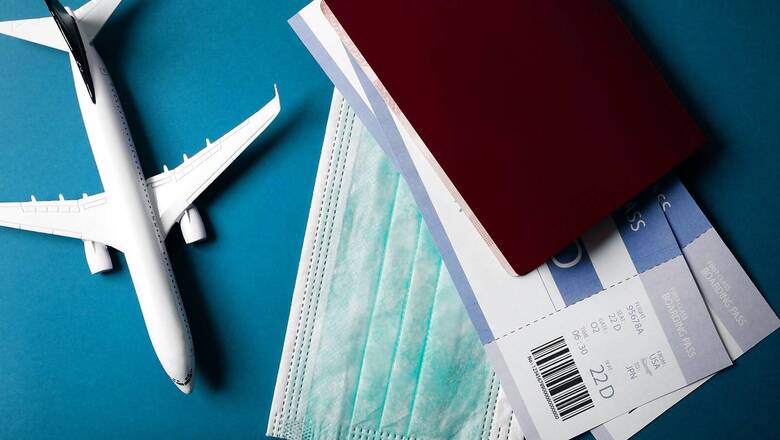
views
There have been significant changes within the air travel industry since the pandemic. However, one thing remains the same – the effort to ensure a safer travel environment. As the world reopens for travel and as more and more people plan to take to the skies whether for leisure travel, to meet their loved ones, or simply to travel for business, the current safety concerns are set to stay for the foreseeable future. Airlines and airports worldwide have instituted protocols and requirements to help keep the flying public safe. To aid in continued safety vigilance, here are Fareportal India’s top tips to fly safely and minimize potential exposure this season.
Fly when it’s least busy
Flying when the airport and airlines are most likely to be at their slowest helps limit the number of people you encounter. Early morning and evenings are the most popular times to fly, and this is also when planes and airports both are most likely to be packed. Try and book nonpeak hour flights that are less crowded. Night flights also work well when passengers are often sleeping, which means fewer people walking in the aisles or conversing with each other. If you can be flexible on what day you fly, try booking midweek flights which may be less crowded than flying over the weekend or on a Monday. Once you are at the airport, another way to avoid the crowds is by visiting an airport lounge until your flight starts to board or sit at a less crowded gate until just before your flight. Also, minimize trips to the in-airport restaurants and shops.
Don’t fly if you are unwell
No one wants to have to cancel his or her travel or fall sick during the trip, especially if it’s a trip to visit family you haven’t seen in a while or a vacation you’ve been putting off since the pandemic began. When you are sick, your immune system tends to be weak. Even if you just have a little under-the-weather feeling, you may be putting yourself at higher risk to catch other illnesses. Hence, the best option is to not fly at all. Also ensure you get yourself tested for your illness before you start travelling in such situations.
Opt for contactless check-in at the airport
Try and limit your contact with people and employees at the airport. When you arrive at the airport, use your smartphone to check into your flight or try using the self-check-in kiosks if available at your airport and then visit the airline counters to drop off your luggage. Most airlines allow you to show them your boarding pass on your phone. If technology is not your best friend, then print off your boarding pass before leaving home to ensure you don’t have to wait in long queues at the airport. Know the current guidelines at your arrival and departure airports and any airports you may have to layover during your flight including any special requirements, such as showing proof of a negative Covid-19 test.
Bring your own safety supplies in your carry-on bag. You can carry up to 350ml of hand sanitizer in your hand baggage. You should also bring N95 masks to wear on the plane and change whenever required. Additionally, you may also pack along some disinfecting wipes to wipe video screen, buttons, seat belt and other surfaces that you might touch during the flight. It’s also a good idea to bring your own travel gear like travel blankets and entertainment devices from home to help you reduce contact. Even though most airlines offer prepackaged food and drinks especially during short haul flights, you may bring your own easy food that can prevent potential communication with food service staff.
Maintain social distance at the airport
It is recommended that you maintain a minimum six-foot distance from other passengers whenever possible. Do wear a face shield and a mask at all times. During a longer layover, you may book an airport pod, if that facility is available to you to avoid coming in contact with too many people at the airport. Once you get on the plane and have sanitized your space, then settle down and do not leave your seat during the flight.
Pay for extra space
Once you choose your airline, take a close look at the seat map on their website. You’ll want to pick a seat with as much room around it as possible, ideally, with an open space next to it.
If you’ve been saving your flying miles or points, now is the time to use them to upgrade your cabin or otherwise stretch your wallet and try if you can swing business class where you have an isolated pod seating. Even premium economy with extra legroom seats, exit row seats or positions near the front of the plane will give you more space apart from other passengers by paying just a little extra.
Read all the Latest Lifestyle News here




















Comments
0 comment